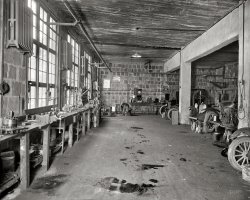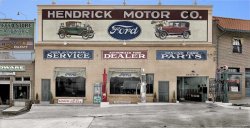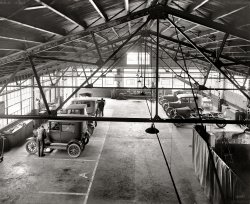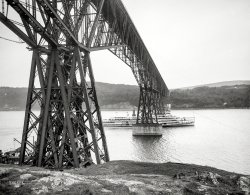
MAY CONTAIN NUTS

Search Shorpy
SHORPY ART

Framed or unframed, desk size to sofa size, printed by us in Arizona and Alabama since 2007. Explore now.
Join and Share
Ad-Free Shorpy
Shorpy is funded by you. Patreon contributors get an ad-free experience.
Learn more.

Recent comments
- Alas, hidden from view
- Exclusive pump
- Details, Details
- What's that building to the left of the tower?
- Coal Barges
- Bromo-Seltzer
- Inner harbor
- The Basin
- What a headache!
- Giant stepladder?
- Baldwin 62303
- Baldwin VO-1000
- Cold
- No expense spared
- Tough Guys
- Lost in Toyland
- And without gloves
- If I were a blindfolded time traveler
- Smoke Consumer Also Cooks
- Oh that stove!
- Possibly still there?
- What?!?
- $100 Reward
- Freeze Frame
- Texas Flyer wanted
- Just a Year Too Soon
- WWII -- Replacing men with women at the railroad crossing.
- Yes, Icing
- You kids drive me nuts!
- NOT An Easy Job
Member Photos
The Shorpy
Print Emporium
Print Emporium
Search Shorpy
Search results -- 30 results per page
- Hendrick Motor Co.: 1928
- Takoma Park, Maryland, circa 1928. "Hendrick Motor Co., Carroll Avenue." National Photo Company Collection glass ... if the founders of this dealership are any relation to the Hendrick family in North Carolina that runs several mega dealerships--and a ... Posted by Dave - 09/04/2012 - 9:37pm -
![Hendrick Motor Co.: 1928 Takoma Park, Maryland, circa 1928. "Hendrick Motor Co., Carroll Avenue." National Photo Company Collection glass negative. View full size.
Fordor SedanThe new Model A Fords must have been painted on the building during the period that Ford was transitioning from the seriously outdated Model T, to the all new Model A. The Tudor Sedan shows a fresh air vent in the lower cowl. No production Model A ever had such a vent.
Legible signsI am struck by the bold, clear and legible use of typography in these older photographs. This is in distinction to the blur of pictograms, logos, and hen scratching that passes for public communications nowadays. Just look at the ads all around us. There was something deeply confident as well as respectful of potential customers embodied in our forefathers' use of graphics.
Model T SportscarAn interesting picture. I'd like to take a spin in a car featured on the sign, that Model T Coupe with the rumble seat.
[That's a Model A roadster. - Dave]
Radio DaysThe sign next to the service entrance says "batteries delivered to your home." That's because the majority of home radios in 1928 required a 6-volt lead acid battery to supply their tube filaments. Radios that ran on house current were just coming to market in 1928.
Takoma FordThis dealership later became Takoma Ford. Our family bought several cars from them because the service manager was a neighbor. The mechanical service area was through the big opening in the picture. To enter the body shop underneath you had to drive around the block.
It's a Sport CoupeThat would be a sport coupe... identified by the landau bars. The top does not fold down as it does on a roadster. Roadsters also did not have roll-up windows.
ObservationsObligatory "you can see the photographer in the reflection."
I wonder if this was a planned photo. You'd think they'd make an effort to clean up the lot.
Also, I'm surprised the barber shop didn't make it with all of the men having time to kill while their cars were being repaired.
Fordor ventsThe car on the right side of the sign is a Fordor rather than a Tudor. The early 1928 Fordors did indeed have cowl vents but they were eliminated shortly after introduction. I have a '28 leatherback Fordor like that.
Early 1928 SedanThe early 1928's did have a cowl vent on the lower driver's
cowl. These were called the "AR" model. The early cars had a number of changes in them, as discussed in the book "Henry's Lady" by Ray Miller. So it's an early 28. Thanks.
Cheap GasThe "Gasoline at D.C. Prices" sign is humorous--today it seems like gas gets cheaper the farther you get from urban areas (at least here in the NY/NJ/PA tri-state area); apparently that wasn't always the case.
I wonder if the founders of this dealership are any relation to the Hendrick family in North Carolina that runs several mega dealerships--and a rather successful NASCAR race team.
(The Gallery, Gas Stations, Natl Photo)](https://www.shorpy.com/files/images/33382u.thumbnail.jpg)
- Hendrick Garage: 1928
- 1928. Takoma Park, Maryland. "Hendrick Motor Co. garage." The sign: "All repair work strictly cash." National ... Posted by Dave - 01/05/2015 - 7:18pm -

- Hendrick Motor Co. (colorized): 1928
- Hendrick Motor Co., Takoma Park Md., 1928 (colorized). View full size.
... Posted by Dennis Klassen - 05/10/2010 - 1:54pm -

- In the Shop: 1928
- Takoma Park, Maryland, circa 1928. "Hendrick Motor Co. garage." Our third look at this establishment. National ... it appears to have the cylinders secured to the cart.
Hendrick gives a darn about his employees!
Slow design development It's ... Posted by Dave - 08/05/2012 - 1:15pm -

- Windows Vista: 1926
- ... and Kalorama road northwest, built and owned by David S. Hendrick, has been leased for a term of years to F. Menefee & Sons, ... the transaction.
No expense has been spared by Mr. Hendrick in making this building one of the largest and most modern garages in ... Posted by Dave - 09/11/2011 - 6:42pm -
![Windows Vista: 1926 Washington, D.C., circa 1926. "Toward St. Albans from 2400 16th Street." National Photo Company Collection glass negative. View full size.
Ontario & Tompkins GaragesThese news articles emphasize the modernity of the designs which avoid the need for car elevators. Earlier this year I attended a fascinating presentation at the Library of Congress on the design history of parking garages. A seemingly obscure topic but many advances in civil engineering arouse from the challenge of storing the suddenly numerous automobiles in 20th century cities. A webcast of the presentation, by Shannon McDonald, is available.
Washington Post, Sep 17, 1922
New Ontario Garage leased my Menefees
The new Ontario garage, at the corner of Seventeenth and Kalorama road northwest, built and owned by David S. Hendrick, has been leased for a term of years to F. Menefee & Sons, according to announcement made yesterday by the office of Morris Cafritz & Co., Inc., the firm which handled the transaction.
No expense has been spared by Mr. Hendrick in making this building one of the largest and most modern garages in the city. The construction is of reinforced concrete, steel and hollow tile The building is two stories high, with street entrances on both Seventeenth street and Kalorama road, thus doing away with elevators. The capacity will be 250 cars, with ample stall and aisle space, and the plant will be a great help in relieving the garage shortage in the Mount Pleasant section.
The arrangement of the show room, retail room and gas station is such that service can be given without confusion.
The building has a frontage of 152 feet and a depth of 150 feet and is 181 feet on the diagonal. It is heated by steam and is well ventilated. The electric light fixtures are so arranged that an excellent distribution of light is given throughout the building. Several unique ideas have been installed by F. Menefee, Jr., who, until recently, was identified with the automobile business in the middle West.
Washington Post, Oct 14, 1923
Grade bans elevator in new structure
The automobile service building located at the northwest corner of Seventeenth street and Kalorama road is about ready for occupancy. This strictly fireproof building is one of the largest buildings of this character in the city.
There is a total of 62,000 square feet of floor space on three floors. Because of the size of the building and because of the streets and alley adjacent, it is not necessary to have an elevator for access to any of the floors. Two large doorways provide an entrance on Kalorama road to the first floor. Access to the second floor is through two large doorways just of Seventeenth street, and access to the third floor is obtained by a slight ramp from a wide public alley.
...
The building is owned by Charles H. Tompkins and was designed and constructed by the Charles H. Tompkins Company, construction engineers.
War of the WorldsWhat's that structure on top of the ridge in the distance, at about 2/3 of the frame from the left? A Tripod avant la lettre?
Tompkins GarageThis is great. Now I know where to take my Oakland when it starts acting up.
And on Mt. St. AlbansThat bump on the horizon is the apse and choir of the National Cathedral, then just barely started construction.
Lincoln WindowsI see "Lincoln," just wondering what's below it. Did they sell/service Lincoln cars or welding supplies?
["Lincoln Service Station." - Dave]
Modular ConstructionThe building in the near foreground looks almost modular with a succession of identical appendages on each identical roof section. Does anyone know the function of this building?
[Those are rowhouses with skylights. - Dave]
Aha!I thought garage was repair shop and could figure out why they needed multiple floors. But they are parking garages? Seems like mostly residential row houses though so did they park their cars in the garages overnight?
These old photos have such fascinating detail!
[Not a parking garage. - Dave]
Still NeighborsMany of the buildings in the photo still exist. The Tompkins garage has one story more and the Packard and Ontario garages are still there. In the background, the apartment building with the small dome and the one to its foreground are around as well. The last two being on Columbia Road.
Oh, my old neighborhood!The street of houses beyond the Tompkins Garage looks to be the 2400 block of Ontario Road -- I used to own a house in the 2300 block (would be to the left of this photo.) The Ontario Garage is now condominiums, and the big dirt patch on the right side of the photo is now where the Harris Teeter store is, which was originally an armory and then a roller skating rink.
View Larger Map
(The Gallery, Cars, Trucks, Buses, D.C., Natl Photo)](https://www.shorpy.com/files/images/32442u.thumbnail.jpg)
- Summit Street: 1909
- ... toward Adams Street
301 United Cigar Stores Co.
303 Hendrick Candy Co.
305 I. F. Strasburger
305 E. G. Herrick
305 Burnham, ... Posted by Dave - 08/09/2012 - 3:18pm -
![Summit Street: 1909 Toledo, Ohio, circa 1909. "Summit Street." 8x10 inch dry plate glass negative, Detroit Publishing Company. View full size.
I was just there.I am just starting research for a book on The Lion Dry Goods Store (325-31 Summit Street), and feel as if I was just looking down the street. I was there in 1964 as a stock boy at the Lion Store.
Here is the 1910 "roster" for this block of Summit Street from the Toledo Directory Company:
Left side of Summit looking from Madison Avenue toward Adams Street
301 United Cigar Stores Co.
303 Hendrick Candy Co.
305 I. F. Strasburger
305 E. G. Herrick
305 Burnham, Stoepel & Co.
307 J. J. Freeman & Co.
309 Drinkwater & Co.
309–11 Kresge 5c & 10c store
313 The Raiment
313–17 Pacific Express Co.
315 A. J. Heesen
315 Dr. S. E. Starr
315 Dr. W. C. Chinn
317 Wilmington & Co.
319 M. F. Newcomer & Son
319 Pacific Express Co. storeroom
321–3 S. H. Knox & Co.
325–31 The Lion Dry Goods Co.
325 D. C. Hoffman
333–47 Lamson Bros. Co.
Right side of Summit looking from Madison Avenue toward Adams Street
300–4 City Loan Co.
302 Severcool & Co.
302–10 Niagara Hotel
302 Earl P. Severcool
302 Duket & Askam
304 Nirdlinger Furnishing Goods Co.
306–8 Almon Hall
308 I. Kopelman & Co.
308 C. T. De Veaux
310 Menter & Rosenbloom Co.
310 J. G. Carter Piano Co.
310 John G. Carter
312 G. R. Aylsworth
312–14 First National Bank
318 Walcott & Knapp Co.
318–20 Metropolitan Business College
320 Wachter Shoe Co.
322 The Hofbrau [Lunch Room?]
322 Joseph Kest
324–26 Kobacker Furniture Co.
328 F. J. Trost
336 D. M. Kable
336 Dr. P. S. Rieg
336 P. W. Rieg
338 Merchants and Clerks Savings Bank
340 Peoples Credit Clothing Co.
340 W. G. Brown
342 vacant store
342 A. V. Watkins
344–46 Star Hardware Co.
348 Stolberg & Parks
348 Toledo Upholstering Co.
You can also see J. R. Grosman (243), The Judd-Gross Co. (245) and The Huston & Co (247)
A tell2:28:29, somewhere in time, certainly no longer in anyone's memory, but full of all the collective hopes and aspirations of these throngs, perhaps seen superficially on their faces
All Gone now Ah the days of "urban removal" took all approx 40% of the building in downtown Toledo - Have to learn by our mistakes.
United We StandAs usual, the United Cigar Store at its customary corner location.
On the EuropeanPlanYou might see them on the street:
Harry Barnett, bell boy, Niagara Hotel, rooms same
Jay Black, bell boy, Niagara Hotel
Fred Goldner, engineer, Niagara Hotel, rooms same
Mark O. Hankins, manager, Toledo Advertising Service, boards Niagara Hotel
W. Barret Hankins, advertising agent, boards Niagara Hotel
James McDonough, manager, Crescent Realty Co., boards Niagara Hotel
Blake Severcool, clerk, Niagara Hotel
Earl P. Severcool, proprietor, The Niagara Hotel, home same
Mrs. Mary E. Severcool, boards, Niagara Hotel
John E. Weir, manager, The Raimant, boards Niagara Hotel
Mrs. Helen Zimmerman, rooms Niagara Hotel
From the Toledo Publishing Company 1910 city directory for Toledo, Ohio
(The Gallery, DPC, Toledo)](https://www.shorpy.com/files/images/SHORPY_4a19345a.thumbnail.jpg)
- Mead's Model Market: 1927
- ... It's funny that in this one and the recent photo of Hendrick's garage that for the first time you see milk bottles not cooling on ... Posted by Dave - 08/08/2012 - 12:47pm -
![Mead's Model Market: 1927 Washington, D.C., circa 1927. "Semmes Motor Company. Mead Market truck." National Photo Company Collection glass negative. View full size.
GBThe truck is a Graham Brothers. The company purchased major components from the Dodge Brothers to build its trucks. Bought Paige-Detroit and renamed it Graham-Paige and began building cars until they went under in 1941.
Sweet rideLooks like a Graham Brothers sedan delivery. A wonderful vehicle, except for those no front brakes--they'd be along in a year or two. It can't be very old, for all the tires (including the spare) to match, and the two-tone paint to be so shiny.
Trivia for those not in DCYou won't find Nichols Avenue SE on Google Maps today. Why not?
Gone now, but......there appears to be an old brick storefront remaining at 2241. Maybe it's the place next door.
LIncoln 8219My grandparents' telephone exchanges were Gilbert and Liberty. I would venture a guess that "Lin" is Lincoln.
Also, the detail is fascinating on this scan.... Down to the Goodyear on the sidewalls of the tires. Nice.
What is that?It may be an optical illusion or maybe my cataracts are growing faster than I thought, but what is that cluster of what looks like curly, fuzzy fur or hair next to the truck driver? Is it an out-of-control hairy dog, an overly affectionate, tousle-haired friend or some sort of display set up in front of the store? I was certain someone would have commented on it. I really need to know what that is if I expect to sleep tonight. Thank you.
[A pile of turnips. - Dave]
MLK AveNichols Avenue SE was renamed Martin Luther King Avenue SE decades ago. Nichols Avenue SE was named after the first medical superintendent of St. Elizabeths Hospital, Charles H. Nichols, which is located on that street. The address now is an empty lot (it's about at the intersection of Maple View Place SE).
Alice & Elgar Mead
Washington Post, Jan 7, 1981
Businesswoman Alice A. Mead,
Ran Food and Liquor Stores
Alice A. Mead, 82, a Washington area businesswoman who had owned and operated food and liquor stores for 60 years, died of cancer Sunday at Doctor's Hospital in Lanham.
Mrs. Mead was born in Washington. She graduated from St. Cecilia's Academy and later attended the old Washington Business School. While still in school, she worked in Shelby's, a general store in Anacostia that was owned and operated by her family.
In 1919, she and her husband Elgar C. (Buck) Mead, established their own grocery store, Mead's Model Market. In 1933, following the repeal of Prohibition, the market became a liquor store. During the 1940s, the couple developed a shopping center on South Capitol Street. In the 1950s, they moved their business to Oxon Hill, where they opened a new store and shopping center.
After her husband's death in 1957, Mrs. Mead continued to operate the Oxon Hill store and remained active in the business until a year ago.
...
In 1956, Elgar C. Mead, a local pioneer in the questionable business of the "brew-thru," successfully fought an injunction allowing his new liquor store to operate a drive-in window. "Judge Marbury noted that the facilities at Mead's [Oxon Hill Liquor Store] through which motorists can buy liquor without leaving their cars are an integral part of the building. The merchandise, cash register, and salesman all are inside the building where the sale is made."
EmptiesIt's funny that in this one and the recent photo of Hendrick's garage that for the first time you see milk bottles not cooling on urban window ledges but as discarded street trash. I'm sure there are collectors out there trying to see if these bottles are embossed with desirable long gone D.C. dairy names.
Mead's dateThere was indeed a Thursday, October 27, in 1927.
(The Gallery, Cars, Trucks, Buses, D.C., Natl Photo, Stores & Markets)](https://www.shorpy.com/files/images/33299u.thumbnail.jpg)
- Juice Bar: 1928
- Takoma Park, Maryland, circa 1928. "Hendrick Motor Co. garage -- Battery Service." Another aspect of the ... Posted by Dave - 07/08/2019 - 4:51pm -
![Juice Bar: 1928 Takoma Park, Maryland, circa 1928. "Hendrick Motor Co. garage -- Battery Service." Another aspect of the establishment last seen here. 8x10 inch glass negative. View full size.
And for your convenience --In case of fire, use the handy bucket of water to toss onto the batteries.
[That's sand. - Dave]
Fully equipped!Lots to see here in this battery service shop, from the fire bucket (just in case), to the batteries stacked on the wooden steps - NOT on the shop floor (still believed to ruin a lead-acid battery.)
Sulfuric acid dispenser on one end of the bench, with a tar pot and (acetylene?) cylinder for heating it at the other.
And a really serious charging rack! With what appears to be a rotary converter to provide the 6+ volts for charging from the shop AC line.
That tankNeeds a chain.
Tar PotThanks to Dbell for clearing that up, I thought it was a just a seriously hard core Coffee maker.
That appears to be a Dynamotor tucked in the corner of the bench, it's an AC motor turning a DC generator, probably the only way to rectify large amounts of current back then.
EquipmentAbove on the wall, obscuring the "R" in "SERVICE", appears to be a gas-fired distiller for (I presume) a source of pure water for the batteries. Also, peeking out behind the battery charging racks on the left, one spies the motor-generator that supplies the charging current.
(The Gallery, Cars, Trucks, Buses, Gas Stations, Natl Photo)](https://www.shorpy.com/files/images/SHORPY-33387u.thumbnail.jpg)
- Poughkeepsie Bridge: 1913
- ... Bridge I'm going to guess that's the passenger steamer Hendrick Hudson of the Hudson River Day Line.
3-mile point ... Posted by Dave - 07/29/2018 - 9:32pm -
























